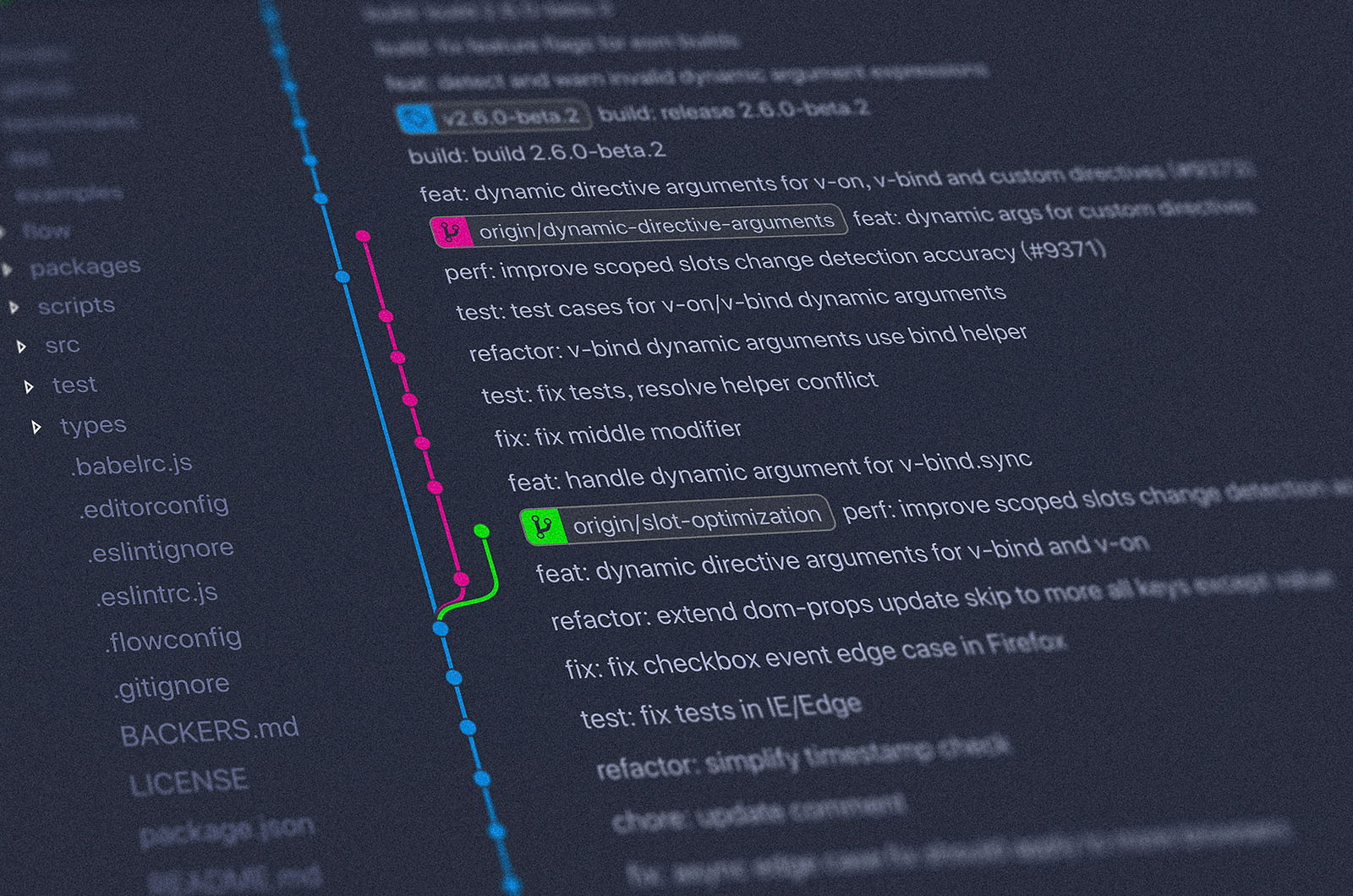Are you currently struggling to decide which UI component library would be the perfect fit for your project? If so, this blog is just what you need. We will explore component library examples in the context of UI frameworks, making the comparison process easier for you.
Magic UI's React component library is a fantastic tool that will assist you in making the right choice. Its features and benefits are designed to help you achieve your goal of deciding which UI component library is the most suitable for your project.
What Is A Component Library?

A component library is a wealth of pre-designed and pre-built user interface elements that are used to fashion digital products like websites and applications. These libraries equip a plethora of pre-made UI elements like buttons, forms, navigation menus, and icons, each designed with a consistent look and feel. They essentially serve as a unified guide to maintaining consistency across interfaces in digital products.
Why Use a Component Library?
UI component libraries are incredibly useful in collaborative design and development environments. They help ensure that all team members are working with the same source of truth and that the end product maintains a professional and polished appearance. This level of consistency can make a significant difference in the quality of the final product, which can have a noticeable effect on user engagement and satisfaction.
React as a Powerful Web Framework
React is currently the second most used web framework in the world. This front-end JavaScript framework allows for the faster and more efficient creation of applications. It can be used to build dynamic web applications, as the data on its user interface keeps updating consistently. React powers the user interfaces of nearly 10 million websites across the globe.
While the core React library is robust, there are several component libraries available that contain valuable design elements for React applications or web development projects. React UI component libraries are tailored to simplify the creation of user interfaces by providing developers with building blocks and elements that adhere to the best design practices and accessibility standards.
Statistical Insights
According to statistics, React will be the second most utilized web framework worldwide in 2022. This front-end library facilitates the swifter and more efficient development of applications. Its use in building dynamic web applications is fueled by the continuous updating of data on the user interface. Presently, React powers the user interfaces of almost 10 million websites globally.
While the base React library is solid, there are numerous component libraries that offer invaluable design elements for your React app or web development project. React UI component libraries are specifically designed to streamline user interface creation by furnishing developers with building blocks and elements that align with the best design practices and accessibility guidelines.
The Benefits Of Using A Component Library

Using any component library can have many benefits that will help you when working on your React project.
Beginner-friendly
UI libraries consist of prebuilt components like buttons, form fields, etc. So, as a beginner, you won’t have to figure out how to create any of the necessary elements from scratch. Instead, you can focus on the implementation and customization with the help of the documentation.
Faster prototyping
With ready-made React components at your disposal, you can quickly create several functioning prototypes. This means you can prove that the design concept is functioning without having to spend too much time on any of the details.
Saves time
Using a component library saves time not only when prototyping, but also when already working on your React project. It enables you to write less code, as you won’t have to write all the styles yourself.
Recognizable components by users
Innovation to a certain extent helps your project stand out. But too much innovation in designing UX/UI can put users off. As the UI elements in libraries are designed to be universal, they won’t cause any friction for your users.
Customizable components
Despite being universal, most elements can be customized at least to some extent. Each library gives you a different amount of control over the customization, but you’ll be able to make sure your website doesn’t look to much like many others.
Proven compatibility across devices
Most prebuilt UI components are mobile-responsive by default, which means you won’t have to put a lot of extra effort into ensuring your React project works on different types of devices.
Accessible by default
Most popular UI component libraries have built-in accessibility features or even fully adhere to WCAG or other standards and best practices. Thanks to this, you won’t have to worry about self-coding semantic tags or keyboard navigation.
Crowd-sourced
UI component libraries often have their communities centered around GitHub. This means users can raise issues, request features, and also easily become contributors to the libraries.
Free and Customizable UI Kit: Build Stunning Web Interfaces with MagicUI
MagicUI is a free and open-source UI library that we designed specifically for design engineers. It offers a collection of over 20 animated components built with React, TypeScript, Tailwind CSS, and Framer Motion. We provide a range of visually appealing and interactive elements that can be easily integrated into web applications, allowing us to create stunning user interfaces with minimal effort.
MagicUI components are highly customizable, enabling seamless adaptation to match our desired branding and design requirements. With our focus on animation and a design-centric approach, MagicUI aims to bridge the gap between design and development, empowering us to craft captivating digital experiences. Along with our free component library, with MagicUI Pro, you can save thousands of hours and create a beautiful landing page, and convert your visitors into customers with our website templates.
Use our React component library for free today at https://magicui.design/docs.
Related Reading
- React Frameworks
- What Are UI Components
- What Is A Component Library
- React Libraries
- React CSS Framework
- React Design Patterns
- Component Libraries
- React Best Practices
27 Component Library Examples Every Designer Must Know

1. Magic UI
MagicUI is a free and open-source UI library that we designed specifically for design engineers. It offers a collection of over 20 animated components built with React, TypeScript, Tailwind CSS, and Framer Motion. We provide a range of visually appealing and interactive elements that can be easily integrated into web applications, allowing us to create stunning user interfaces with minimal effort.
MagicUI components are highly customizable, enabling seamless adaptation to match our desired branding and design requirements. With our focus on animation and a design-centric approach, MagicUI aims to bridge the gap between design and development, empowering us to craft captivating digital experiences. Along with our free component library, with MagicUI Pro, you can save thousands of hours and create a beautiful landing page, and convert your visitors into customers with our website templates.
Use our React component library for free today at https://magicui.design/docs.
2. Material UI
Material-UI (MUI) is a fully loaded UI component library that offers a comprehensive set of UI tools to create and deploy new features at speed. It is one of the most powerful and popular UI component libraries out there with over 3.2 million downloads on npm a week, 78k stars on GitHub, 17k+ followers on Twitter, and 2.4k+ open-source contributors.
There are two ways to go about it – you can either use this component library directly or bring your design system to their production-ready components. This platform will enable you to design faster without sacrificing control or flexibility. It will help you deliver excellent designs in order to delight the end-users.
3. Polymer Elements
Google’s Polymer library lets you build encapsulated, reusable Web Components that work like standard HTML elements with an experience as simple as importing and using any other HTML element. Polymer elements is a GitHub organization containing over 100 reusable Polymer components as standalone repositories you can browse and use off-the-shelf.
4. Angular Material
Angular Material, formerly known as Material2, is Google’s official Angular UI component library. It is built using TypeScript and focuses on implementing the application based on Google’s Material Design. Most importantly, Angular Material allows developers to create their own customized components. Angular Material has more than 22,000 GitHub stars and 1.1 million weekly NPM downloads.
5. NG-Bootstrap
NG-Bootstrap is an open-source library built on top of Bootstrap CSS, providing components and design patterns that many developers are already familiar with. This reduces the learning curve for new projects, making it a reliable choice for building Angular applications quickly and efficiently.
NG-Bootstrap extends the capabilities of Bootstrap components by allowing developers to use them as Angular directives, with two-way data binding and other Angular-specific features. This makes it easy for developers to create responsive, mobile-friendly web applications that work seamlessly with Angular.
6. Chakra UI
Chakra UI, created by Segun Adebayo in 2019, emphasizes simplicity, modularity, and accessibility. The React component library Chakra UI provides developers with extensive hooks and components for constructing accessible, responsive web apps.
The large range of custom hooks that abstract away typical UI logic like animation, disclosure, and more makes Chakra UI powerful. These hooks simplify complex interfaces. Excellent offerings and performance are making Chakra UI popular with 1.3 million monthly downloads and 19,700 GitHub stars.
7. Ant Design (AntD)
If you are looking for a react based UI component library to build enterprise-grade products, Ant Design is an excellent option. It will help you create an enjoyable yet productive work experience. This tool is used by companies like Alibaba, Baidu, Tencent, and many more.
Ant Design offers multiple UI components to help enrich your application and software systems. Ant Design also recommends you use other React-based third-party component libraries like React JSON View, React Hooks Library, and more. It does maintain documentation and supports community discussions through GitHub, Segmentfault, and Stack Overflow.
8. Clarity
Clarity is an open-source library that uses a shared visual language across its components to provide a consistent, intuitive UI. It’s also extensively documented, with numerous guides, tutorials, and API references, making it easy to learn and use. The Clarity design system is based on the concept of “cards,” which are used to group related content. Cards are used to represent individual pieces of content in a structured and organized way.
Clarity provides a variety of card components that can present data in a variety of formats. These card components include headers, footers, and content sections, and can be easily customized with different styles and themes. The cards can also be combined with other components — such as modals, dropdowns, and buttons — to create more complex UI designs. The overall goal of the card-based design is to provide a flexible and modular system for creating complex interfaces with ease.
9. Kendo UI
Kendo UI is a commercial library built with performance in mind, ensuring fast load times and a smooth user experience. It also provides themes and styling options to enhance the look and feel of your application, as well as extensive documentation and a dedicated support team. Kendo UI uses techniques such as virtualization and lazy loading to ensure fast load times and a smooth user experience.
This means that applications built with Kendo UI are fast and responsive, even when dealing with large datasets. Kendo UI also follows a modular architecture that enables developers to use only the components that they need, reducing the library’s size and improving performance.
10. Semantic UI
Semantic UI React is the official integration of the popular frontend framework Semantic UI for React. The styling of Semantic UI React is based on the Semantic UI theme and it's also free from jQuery. Apart from that, there are other useful features like augmentation, shorthand props, auto-controlled state, etc.
Considering the Downsides: Potential Weight and Customization Challenges
On top of this, there are some things you might want to consider.
- Semantic UI can feel a bit heavy for simple websites. It includes plenty of features you might not need, which can slow down your page load times.
- While customizing the look and feel is possible, it can be tricky. The documentation might not always be accurate, and the code itself uses a lot of "important" styles, which can make it challenging to override it with your own styles.
Customization Complexity
All things considered, Semantic UI is a solid option for building functional desktop web apps quickly. Just be aware of its weight and potential customization challenges before diving in. If you need a lightweight solution or a highly customized design, you might want to consider other React libraries. The total GitHub stars of Semantic UI React are more than 13K and weekly NPM downloads are more than 230K.
11. React Bootstrap
Another popular front end framework – React Bootstrap, is rebuilt for React-based applications and systems. It has replaced Bootstrap JavaScript, where each component is developed from scratch as native React components without needing dependencies such as jQuery. React-Bootstrap, despite being one of the earliest React libraries, has evolved to become an excellent option for building effortless user interfaces. It includes amazing UI elements for your mobile and web applications.
12. Blueprint UI
Blueprint UI, an open-source project by Palantir Technologies, provides high-quality UI components. Blueprint is a React-based UI toolkit for designing complicated, data-dense desktop interfaces. If you want to build desktop apps, this React component library is ideal. The core Blueprint NPM package includes 30+ familiar and unique React components such as Button, Card, Menu, Form Group, File Input, etc.
Datetime and Datetime2 for dates, Icons with over 300 vector UI icons, Select and Table for items selection in a list, and interactive spreadsheet interfaces building are among Blueprint’s other NPM packages. Blueprint UI is quite popular with 20,000+ stars on GitHub and 190,000+ weekly downloads on NPM.
13. visx
Created by Airbnb, visx is a collection of multiple low-level, expressive visualization primitives built for React applications. It was developed to unify a complete visualization stack throughout the company, bringing together the delight of React with the robustness of D3 for calculations.
With visx by your side, you will get a native experience in any React-based codebase as it has the same patterns and standard APIs. This way, it solves the problems of copying-pasting various React hooks. Instead, it can abstract D3 details and offer utilities and components in standard formats. If you like customizable and performing charts, visx is a great tool.
14. PrimeReact
PrimeReact is an extensive React component library utilized by global corporations such as Mercedes, ebay, Nvidia, Intel, American Express, and Lufthansa, etc. The app gained popularity between 2022 and 2023 (from 39.5k to 78.7k weekly downloads). Over 90 React components are ready to use in your app. TreeSelect, Organisation chart, Terminal, and Captcha are unique components it offers.
PrimeReact provides customizable templates and 280+ copy-and-paste UI elements to build any interface swiftly. Its design-agnostic infrastructure lets you use the look and feel of popular libraries like Material and Bootstrap or construct your own. The GUI-based Theme Designer includes 500+ variables to customize. They offer help and reply to feature or enhancement requests within one business day.
15. Mantine
Mantine is a free and open-source React components library that provides 134 fully responsive React components for 25 different categories like navbar, error pages, blog card, comments, sliders, etc. to be put into production. It’s becoming a popular choice for developers, especially those familiar with Material UI. If you're transitioning from Material UI v5, Mantine v6 offers a smooth upgrade path thanks to their similar styling syntax (Emotion). Mantine v7 takes a different approach, relying on standard CSS for customization.
Devs approve of Mantine's components for their high quality and reduced need for customization compared to Material UI. Features like multi-selects and date pickers are considered more intuitive by default in Mantine. Mantine also offers a modern look and feel. Unlike Material UI's distinct style with all-caps buttons and paper shadows, Mantine has a more neutral aesthetic. This allows for easier creation of unique designs without extensive customization. It has got more than 24K stars on GitHub and more than 350K weekly downloads on NPM for its core components library.
16. Headless UI
Tailwind Labs created headless UI as a collection of unstyled, fully accessible UI components that work seamlessly with Tailwind CSS. Headless UI is responsible for providing the best React frameworks for your React project. Tailwind CSS is taken a step further with Headless UI, which provides the entire best React UI framework with the best React components. Tailwind CSS, which is offered out-of-the-box to meet your individual needs, can be used to style them.
Toggle Switch, Autocomplete, and Modal are all common components in Headless UI. Each element comes with a simple example, styling instructions for each portion, and instructions for customizing it to your needs. It also has a complete API for transitions and accessibility information.
17. Semantic UI React
Integrating React with Semantic UI can be an excellent strategy to get a customized UI component library for your projects. Semantic UI React helps you build your sites and applications with concise and easy HTML. It has 12k+ stars on GitHub. With this tool, you can load any CSS theme you want on the app you are building. It also has human-friendly HTML to develop software products. It’s a declarative API that offers powerful prop validation and features.
18. React-admin
If you are looking for a React framework to build your B2B applications, React-admin is a good option. It aims to provide the best experiences to developers and enables you to focus more on fulfilling your business needs. This is an open-source tool with an MIT license and is robust, stable, easy to learn, and a joy to work with.
This is why 10k+ companies across the world have used React-admin on their projects. With React-admin, you can create delightful UIs, whether you are building your internal tools, B2B apps, CRMs, or ERPs. It aims at increasing the maintainability and productivity of developers by allowing them to design faster.
19. Retool
If you are building internal applications, Retool is an excellent option. It will eliminate the struggle with UI libraries, data sources, and access controls. You will get a streamlined way of handling everything and producing apps that customers love to use. This tool has been used by businesses of all sizes, from Fortune 500s to start-ups for creating awesome internal applications.
20. Grommet
According to its official site, Grommet is a React library that prioritizes accessibility, responsiveness, and scalability. It offers a set of pre-built components designed for building web applications that work well across different devices and for users with different needs. User experiences with Grommet can be mixed. Some devs praise its focus on usability and theming, but others have complained about bugs and breaking changes between minor versions. While Grommet offers a good range of components, some developers find Material-UI provides a wider selection and more customization options. It has got 8K GitHub stars and more than 26K weekly downloads on NPM.
21. Evergreen
Offered by Segment, Evergreen is an amazing React UI library that helps you create delightful software products. It’s also a design system that offers you flexibility and does not limit you to a particular configuration or needs obsolete integration.
Evergreen facilitates building software products that can adapt to changing design needs. It offers a lot of features, components, and many benefits to help you create user-friendly and powerful interfaces. If you want to build enterprise-grade web applications, this will be a good option for you.
22. ThemeUI
Theme UI is a library for designing React user interfaces that may be customized. It mainly follows design concepts that are based on constraints. Developers use theme UI to customize base components, create themes, and create their design systems. There are two key steps in designing using Theme UI. The first step is to make your theme, which requires choosing fonts and colors. The style of individual components is the next step, which gives you more control over your site. Theme UI is one of the finest React libraries for web development.
Theme UI also allows you to style MDX content, integrates with existing styled systems and component libraries, and includes dark-mode and mobile-first responsive styles. The documentation for Theme UI is extensive, including instructions for theming, styling MDX, and custom hooks. Guides and recipes on using and constructing custom components are also available as resources.
23. Onsen UI
If your project prioritises a mobile-first experience, Onsen UI is a solid choice. This library helps design interfaces that feel native to mobile devices. It achieves this by offering components and features that mimic the look and feel of native iOS and Android apps. Onsen UI's also touch-friendly UI and native-style animations bridge the gap between web and mobile, creating a smooth user journey for mobile users. Naturally, there are some downsides to consider.
The cost of Onsen UI has recently increased noticeably, and some users have reported bugs that take a while to get fixed. While iOS performance is good, Android apps built with Onsen UI can sometimes feel sluggish.Native functionalities like maps require separate plugins. It has got 8K GitHub stars and more than 24K weekly downloads on NPM.
24. React Router
Developed and maintained by the Remix team and its contributors, React Router is an impressive React UI component library. Its recent version is v6 which uses the best features from its previous versions and features some improvements as well. Development teams from reputed companies such as Airbnb, Discord, Microsoft, and Twitter have used this tool in their projects. It’s best if you are searching for a router user interface that can work with a different interface. It can match your app components with corresponding URLs to ensure a better user experience.
25. Gestalt
Gestalt is a UI library that helps you create amazing user interfaces that people love using. It’s Pinterest’s design tool as well and comes with many features and components. Its interface is also smooth to allow developers quickly get started with the tool.
26. Shards React
Web development professionals get the choice to craft an extensive range of precise dashboards, web portals, and mobile applications for a diversity of industries component libraries. The sleek and straightforward design Framework also makes it one of the best in the minimalist libraries of React components.
The React library is fast and efficient on different platforms because of the optimized code. Shards React can ensure giving the developers the perfect mixture of the customization options. There are many components, and the base library is free. But if you wish to get more templates, components, blocks, then there is always a way of purchasing the pro kit to ensure the addition of tons of the additional features.
27. React Motion
If you are looking for a solution to animate components in React, you can consider React Motion. It is an excellent React library that will help you create realistic animations. It’s easy to get started with this tool and use it. What makes this tool even more attractive is that you can specify stiffness values. You can also define damping parameters. This way, your components will look more realistic as you can control the stiffness. React Motion can easily animate a simple card component’s scaling. For this, you will need to utilize styled-components.
Related Reading
- Best React Native UI Library
- React Component Best Practices
- Tailwind Vs Bootstrap
- Material UI Alternatives
- Best React Component Library
- React Tips
- Create React Component Library
- Cool React Components
- Bootstrap Vs React
- React Native Libraries
- Best React UI Framework
- NextJS
- Next.JS
- Next JS
- React Bootstrap
- MUI Table
- MUI Card
- MUI Box
- What Is NextJS
What Makes A Good Component Library For Your Project?

1. Project needs
The first thing I consider when evaluating a component library is whether it meets the needs of my project. A large enterprise application, for instance, would require a library capable of supporting a high level of complexity. This involves looking at not only the scale of the project but also the type and any specific requirements.
2. Longevity
I also look at the longevity of the library. This means gauging how frequently it is updated and whether it will likely be supported. It is important to choose a library that is actively maintained to avoid having to switch to a new library in the future.
3. Learning curve
Another important factor is how easy it is for a new developer to pick up and use the library. If you work in a team, choosing a library that's easy for new developers to learn is crucial.
4. Customizability
Can the library be tailored to fit your brand's design guidelines? This is a question that must be answered. Some libraries are more customizable than others, so if you have specific design requirements, you must choose a library that can be customized to meet your needs.
5. Community
A large and active community is important when choosing a library. This is because a large community can provide support and help you resolve any problems that you encounter.
6. Documentation
Is the library well-documented? Good documentation makes learning how to use the library and find solutions to problems is easier.
7. Performance
I consider the performance of a library. Some libraries are more performant than others. If you need a highly performant React component library, you should choose one known for its speed and responsiveness.
Choosing a component library that meets these criteria is essential to the success of your project.
How To Get The Best Out Of Using React Component Libraries

Using component libraries effectively can significantly enhance your development workflow and the functionality of your applications. It's essential to understand that not all libraries are created equal. Each has unique features and benefits, and combining multiple libraries can help you get the most out of them. Here's how you can maximize the value of component libraries:
Understand the Strengths of Each Library
Every library is designed to solve specific problems or add particular functionalities. Before integrating a library into your project, take the time to understand what it excels at. For instance, Material-UI offers a comprehensive suite of UI components. By identifying the strengths of each library, you can select the best tools to address the specific needs of your application.
Combining Libraries for Enhanced Functionality
Consider combining two or more libraries to fully leverage the power of component libraries. This approach allows you to create a more powerful and cohesive development environment. Combining libraries enables you to take advantage of their collective strengths, creating a more efficient and effective development process.
Enhancing Libraries with Magic UI
Integrating Magic UI is a game-changer to get the best from any library combination. Magic UI can enhance your existing libraries in several ways:
Consistency
Magic UI ensures a consistent look and feel across your application, regardless of the libraries used.
Efficiency
It can automate repetitive tasks and streamline the integration process, saving you time and effort.
Customization
Magic UI offers advanced customization options, allowing you to tailor the libraries to fit your specific needs perfectly.
Accessibility
It can improve accessibility features across your application, ensuring a better user experience for all users.
By adding Magic UI to your library stack, you enhance the capabilities of each library, leading to a more cohesive and powerful application.
Related Reading
- Chakra UI Vs Material UI
- React Animation Libraries
- Ant Design Vs Material UI
- Mantine Vs Chakra
- Free React Components
- Semantic UI Vs Material UI
- React UX
- Material UI Vs Joy UI
- Ant Design Alternatives
- Material UI React
- MUI React
Check Out Our React Component Library for Design Engineers
MagicUI is a free and open-source UI library that we designed specifically for design engineers. It offers a collection of over 20 animated components built with React, TypeScript, Tailwind CSS, and Framer Motion. We provide a range of visually appealing and interactive elements that can be easily integrated into web applications, allowing us to create stunning user interfaces with minimal effort.
A React Component Library with Over 20 Animated Components
MagicUI offers a collection of over 20 animated components built with React, TypeScript, Tailwind CSS, and Framer Motion. These components make it possible to create visually appealing and interactive user interfaces with stunning animations. With MagicUI, developers can easily integrate these components into their web applications to enhance the user experience.
Easily Integrate Stunning UI Components into Web Applications
MagicUI components are highly customizable, enabling seamless adaptation to match our desired branding and design requirements. These components can be integrated into web applications with ease, providing developers with the tools needed to create impressive user interfaces. By leveraging the power of MagicUI, developers can save time and effort when designing their applications.
Highly Customizable UI Components to Match Your Branding
With MagicUI, developers have the flexibility to customize UI components to match their branding and design requirements. This level of customization ensures that the user interfaces created with MagicUI will seamlessly integrate with existing design elements and branding guidelines. MagicUI empowers developers to create captivating digital experiences that resonate with their target audience.
Bridging the Gap Between Design and Development
MagicUI aims to bridge the gap between design and development, empowering developers to craft captivating digital experiences. By providing a design-centric approach and focusing on animation, MagicUI makes it easy for developers to create user interfaces that captivate users. MagicUI components enable developers to create stunning user interfaces while minimizing the effort required.
Save Time and Effort with Beautiful Landing Page Templates
MagicUI Pro offers developers the opportunity to save time and effort by providing beautiful landing page templates. These templates are designed to convert visitors into customers, making them an invaluable resource for developers looking to create engaging web applications. MagicUI Pro empowers developers to create captivating landing pages that drive conversions and deliver results.
Start Using Our React Component Library for Free Today!
With MagicUI, developers can start using our React component library for free today. By leveraging the power of MagicUI, developers can save time and effort when designing their web applications. MagicUI empowers developers to create visually appealing and interactive user interfaces that captivate users and deliver outstanding user experiences.
Start using MagicUI today and take your web applications to the next level.
